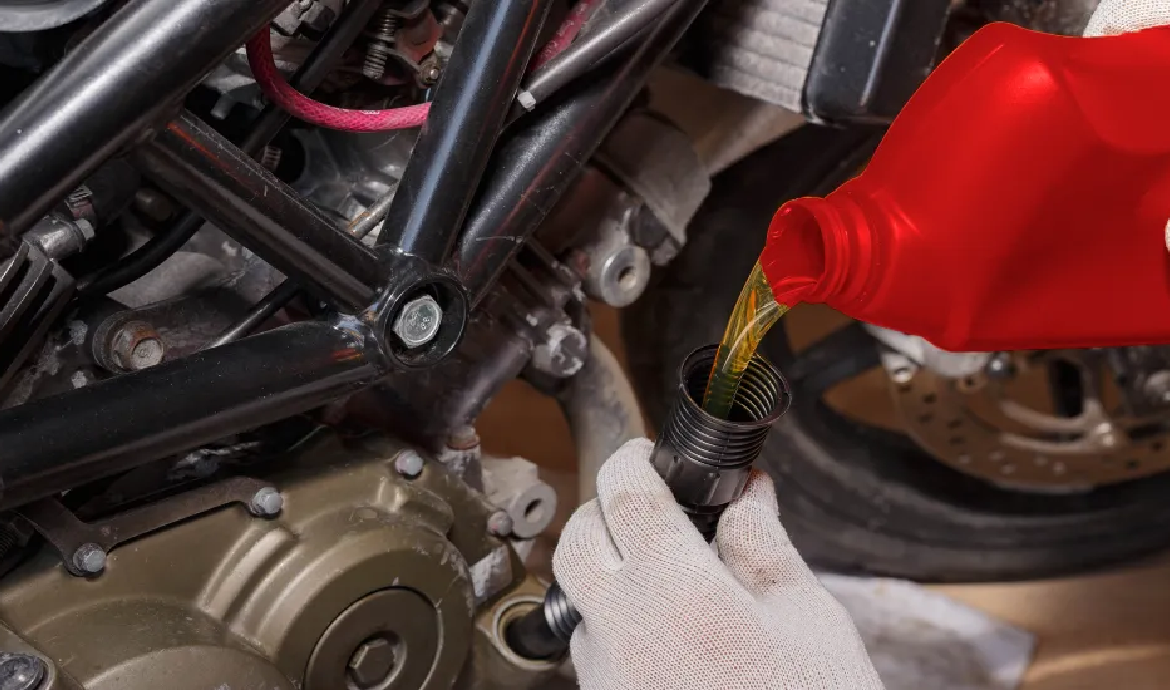- Your cart is empty
- Continue Shopping
Guide to Motorcycle Engine Oil
-
Hybr Auto India Pvt Ltd
- Posted on

Introduction
Motorcycle engine oil is vital for keeping your bike’s engine running smoothly and efficiently. Just like in cars, the right oil ensures proper lubrication, cooling, and protection for your motorcycle’s engine components. In this guide, we’ll explore the different types of motorcycle engine oil, their benefits, how to choose the right one for your bike, and essential tips for maintaining your engine.
Hybr Auto India Pvt Ltd
What is Motorcycle Engine Oil?
Motorcycle engine oil is specifically formulated to lubricate, cool, and clean the engine of a motorcycle. It performs several critical functions:
- Lubrication: Reduces friction between moving parts to prevent wear and tear.
- Cooling: Helps dissipate heat generated by engine operation.
- Cleaning: Suspends contaminants and prevents sludge buildup.
- Protection: Guards against rust, corrosion, and oxidation.
2. Types of Motorcycle Engine Oil
a. Conventional Motorcycle Oil
- Description: Made from refined petroleum, conventional motorcycle oil is often used in older bikes or those with simpler engine designs.
- Best For: Older motorcycles or those with standard engine configurations.
- Pros: Cost-effective and widely available.
- Cons: Requires more frequent changes and may not perform as well in extreme conditions.
b. Synthetic Motorcycle Oil
- Description: Engineered from chemical compounds, synthetic oil provides superior performance and protection.
- Best For: Modern motorcycles, high-performance engines, and extreme riding conditions.
- Pros: Offers better temperature stability, longer intervals between changes, and enhanced engine protection.
- Cons: More expensive than conventional oil.
c. Semi-Synthetic Motorcycle Oil
- Description: A blend of synthetic and conventional oils that provides a balance between cost and performance.
- Best For: Riders who want improved performance without the full cost of synthetic oil.
- Pros: Better performance and protection than conventional oil at a lower price than full synthetic.
- Cons: Not as high-performance as fully synthetic oils.
d. High-Mileage Motorcycle Oil
- Description: Formulated for bikes with higher mileage, containing additives to reduce oil consumption and protect aging engines.
- Best For: Older motorcycles with significant mileage.
- Pros: Helps reduce leaks and oil burn-off, and conditions seals.
- Cons: Not necessary for newer bikes or those with low mileage.
3. How to Choose the Right Motorcycle Engine Oil
- Consult Your Owner’s Manual: Always refer to your motorcycle’s manufacturer recommendations for the correct type and viscosity of oil.
- Understand Oil Viscosity: Motorcycle engine oils are classified by their viscosity ratings (e.g., 10W-40). The first number represents the oil’s flow at low temperatures, while the second number indicates its flow at high temperatures.
- Consider Your Riding Style: If you often ride in extreme conditions (hot weather, off-road), you might need a specific type of oil designed for those conditions.


4. Benefits of Using the Right Motorcycle Engine Oil
- Smooth Performance: Proper oil ensures smooth engine operation and responsive performance.
- Extended Engine Life: High-quality oil reduces wear and tear, potentially extending the lifespan of your engine.
- Enhanced Protection: Protects against rust, corrosion, and overheating.
- Improved Efficiency: Helps maintain optimal engine efficiency and fuel economy.
5. Signs That You Need to Change Your Motorcycle Engine Oil
- Oil Change Light: Some bikes have an oil change indicator that lights up when it’s time for a change.
- Check Oil Level: Regularly check the oil level using the dipstick or oil sight glass. If it’s low or the oil appears dirty, it’s time for a change.
- Oil Color: Fresh oil is usually amber or golden. If the oil is dark and gritty, it’s time to replace it.
- Engine Noise: Increased noise or rough operation can indicate that the oil is old or low.
6. DIY Oil Change vs. Professional Service
- DIY Oil Change: Changing your motorcycle oil yourself can save money and give you a sense of accomplishment. Ensure you follow the correct procedure and dispose of the old oil properly.
- Professional Service: A professional service ensures the job is done correctly and can also include other maintenance checks for your bike.
7. Tips for Maintaining Your Motorcycle Engine Oil
- Regular Checks: Frequently check the oil level and quality to ensure it’s within the recommended range and in good condition.
- Follow the Schedule: Adhere to the oil change intervals specified in your motorcycle’s owner’s manual.
- Use the Right Oil: Always use the type and viscosity of oil recommended by the manufacturer to avoid potential damage.


